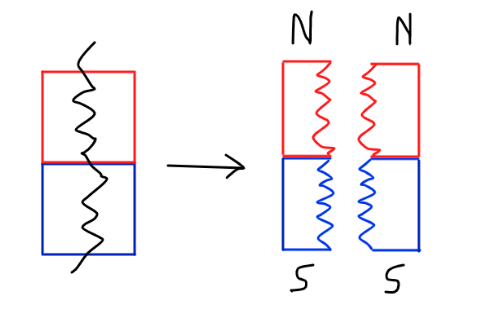Imagine we have a magnet (red side is the north pole, blue side is the south pole), and imagine two ways to split it.
The first way:
When we split it by separating the north pole from the south pole, we see that the two pieces are themselves dipole magnets. The two broken ends will be opposite poles and they will attract each other.
The second way:
When we split it along the two poles, the two resulting magnet pieces will repel each other.
Note that the colors are just representations of the poles of the magnet, and when the colors change, they don't represent any change in the pieces of the magnet itself.
My question: If there is a repulsive force within the magnet that is pushing the magnet horizontally apart (in my picture), then what is keeping it together?
It seems to me that the stability of the magnet can't be explained with electromagnetic forces alone, but that doesn't seem quite correct. What keeps the domains of the magnet together? And at the atomic level, what keeps the atoms together?



